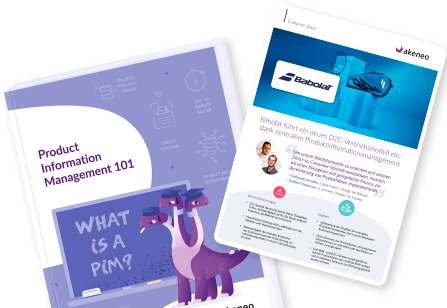Nov 15, 2023
8 min to read
Many organizations have been expanding operations to take full advantage of new online touchpoints. But how do you know which eCommerce strategy is right for your team, and how do you get started?

It wasn’t long ago that catalogs ruled the day, brick-and-mortar stores ruled High Street, and malls were the place to be. Salespeople hit the actual pavement hawking manufacturers’ goods from coast to coast.
Then along came the digital transformation.
First there was dial-up internet and chat rooms. Then came along Amazon, social media, Yelp reviews. Before you knew it, you barely existed if your business didn’t at least have a Google listing.
Each of these new creations became more than a fad. They became channels through which potential buyers learned about your products. But businesses faced the challenge of managing these multiple channels at once, and two dominating strategies emerged: omnichannel eCommerce and multichannel eCommece.
What exactly is difference between omnichannel vs. multichannel, and how can one or the other impact your business? Let’s dive in.
Multichannel eCommerce is short for “multiple channels.” It simply means that you sell your products on more than one channel. Many retailers have both a physical store and an online presence, selling on social media, eCommerce sites, marketplaces, and other platforms. For manufacturers, multichannel eCommerce has been truly revolutionary, allowing them to sell direct-to-consumer rather than having to rely on third parties and catalogs.
Businesses following a multichannel approach focus on building out individual channels while ensuring product information is accurate and consistent. They tailor strategies to each channel and track results, but each channel acts as a “solo act” rather than a player in an orchestra.
Because of the digital transformation, even the most old-school retailers and manufacturers typically have a basic website or social media presence by now, making them multichannel by definition.
For some, this simple strategy can bring rewards like:
So why the debate between multichannel eCommerce vs. omnichannel?
Those who have operated under a multichannel eCommerce framework will know the struggles well, such as:
New business plans can typically fix the first three issues. However, the last two points are the reason why multichannel vs. omnichannel eCommerce remains a problem, so let’s dive into omnichannel.
Omnichannel eCommerce combines all customer channels for brand interaction into one strategy, going beyond multichannel approach. Instead of working separately, all your channels collaborate, communicate, and influence each other. This creates a harmonious “orchestra” that guides your customers throughout their purchasing process.
The biggest difference between omnichannel and multichannel eCommerce is that while omnichannel is people-focused, multichannel is product-focused; while omnichannel is customer-centric, multichannel is channel-centric. Multichannel eCommerce is all about moving inventory as efficiently as possible through various channels. Omnichannel takes a more holistic approach, aiming to provide a seamless experience throughout the entire customer journey.
Both strategies have data at their core, but even then, there’s a difference: The foundation of multichannel eCommerce is product data. The foundation of omnichannel eCommerce is both product and customer data.
Multichannel presents your products on various channels and allows your customers to purchase them or otherwise communicate with you. You’ll collect data on what’s selling, when, and how quickly, but not on customer behavior and preferences. And while you’ll be able to see individual channel performance, you won’t be able to see how all the channels work together.
Omnichannel retail is an integrated experience. Data is shared between channels to target and retarget buyers, providing seamless experiences. Buyers can continue where they left off, even if it was on a different channel. Each interaction builds upon the last, fulfilling the customer’s needs as they progress through the buying journey.
Essentially, omnichannel takes multiple channels and synchronizes them, while multichannel leaves them separated and siloed. Thus, all omnichannel eCommerce is multichannel, but not all multichannel is omnichannel.
When you look at omnichannel vs. multichannel, it seems obvious to say that omnichannel is better. Multichannel is a more siloed approach, and whether you’re in retail, manufacturing, or distribution, the digital transformation has paved the way forward for holistic, omnichannel eCommerce.
So why aren’t more companies focused on omnichannel?
The truth is that omnichannel strategies typically require a large investment of resources, especially in the beginning. If you operate out of a brick-and-mortar store or warehouse using a catalog or third-party partnership model, creating even a multichannel strategy means you’ll need to build a website, leverage marketplaces, learn about social media, and start advertising.
To reach true omnichannel status, you’ll also need to syndicate your product data, optimize your tech stack, synchronize your customer data, and then use analytics to segment and target and deliver personalized content at every touchpoint.
When business are instead offered a simple, straightforward multichannel strategy that can still increase sales in the short-term, it can be tempting to not make a further investment in omnichannel. But that’s a mistake.
Omnichannel vs. multichannel eCommerce is ultimately about a long-term vs. short-term approach. The fact is that the digital transformation is turning the world toward omnichannel experiences. You can either build an omnichannel commerce strategy now and get ahead of your competition—or you can be left behind.
Luckily, many of the differences between omnichannel vs. multichannel can be mitigated with the right technology and partners. While a multichannel strategy will use separate and disparate technologies, like eCommerce platforms for selling, customer relationship management (CRM) systems, or customer data platforms (CDPs), composable technology allows you to orchestrate and scale your tech stack as your challenges and goals expand.
Best-of-breed Product information management (PIM) systems are a great place to start implementing an omnichannel strategy. A PIM provides a central database for your product information, allowing you to distribute consistent, accurate data to all of your channels while also conforming to their rules — and a composable PIM means that it connects seamlessly with your existing technology, and plays nicely with new systems introduced down the road.
Ready to learn more about best-of-breed technology can help you implement and support an omnichannel strategy? Book your demo today to see the benefits for yourself.
Discover how Akeneo's composable technology can support an omnichannel product experience strategy today.

Sign up for our newsletter and stay ahead of the curve on everything you need to know about product information management, product experience management and how to unlock growth for your organization.
